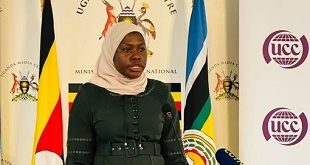
Kampala, Uganda | THE INDEPENDENT | HIV infections are declining worldwide and more people living with HIV are getting access to treatment, but still, thousands of children are still falling between the cracks. This is according to a new report; Power to the people, launched by UNAIDS, ahead of the World AIDS day.
The agency said that significant progress has been made, particularly in expanding access to treatment. As of mid-2019, an estimated 24.5 million of the 37.9 million people living with HIV were able to access it, implying that fewer people are dying of AIDS-related diseases as treatment roll-out continue.
In a statement, UNAIDS Executive Director Winnie Byanyima also insisted that when people living with HIV actively participate in their own care, and are empowered to choose and work together, new infections drop, lives are saved, more affected people access treatment and dignity is restored.
Byanyima added that the commemoration of World AIDS Day, on 1 December 2019, is an important opportunity to recognize the essential role that communities have played and continue to play in the AIDS response at the international, national and local levels.
Progress in reducing HIV infections, however, is mixed and 1.7 million people were newly infected with the virus in 2018. New HIV infections declined by 28 per cent from 2010 to 2018 in eastern and southern Africa, the region most affected by HIV. However, young women and girls still bear the brunt of new HIV infections—four out of five new HIV infections among adolescents in sub-Saharan Africa are among girls.
Gender inequalities, patriarchal norms, violence, discrimination and limited access to sexual health services exacerbate the HIV risk among adolescent girls and young women, particularly in this region.
Moreover, by doing unpaid and often undervalued work – looking after the sick, elderly and disabled – they underpin fragile social support systems that hinder their community involvement in the HIV response, Byanyima said, adding that without this, more people would not be on treatment.
She explains that although significant progress has been made in reducing new HIV infections, reducing AIDS-related deaths and reducing discrimination in many parts of the world, gender inequality and denial of human rights are leaving many people behind.
She urged all countries to bolster community-led organizations, indicating that sitting at decision-making tables not only supports the well-being of their communities but also removes barriers.
There are also major concerns that a quarter of a million children aren’t getting the care they need. Only 54 per cent of children up to the age of 14, living with HIV in 2018 were receiving lifesaving antiretroviral therapy.
According to a global snapshot on children, HIV and AIDS released by UN Children’s Fund-UNICEF on Tuesday, some 320 children and adolescents died every day from AIDS-related causes in 2018, or 13 every hour. The deaths resulted from low access to antiretroviral treatment, in addition to limited prevention efforts.
“The world is on the cusp of making great gains in the battle against HIV and AIDS, but we must not rest on the laurels of progress made. Neglecting testing and treatment initiatives for children and adolescents is a matter of life and death, and for them, we must choose life,” UNICEF Executive Director Henrietta Fore said.
*****
URN
 The Independent Uganda: You get the Truth we Pay the Price
The Independent Uganda: You get the Truth we Pay the Price





